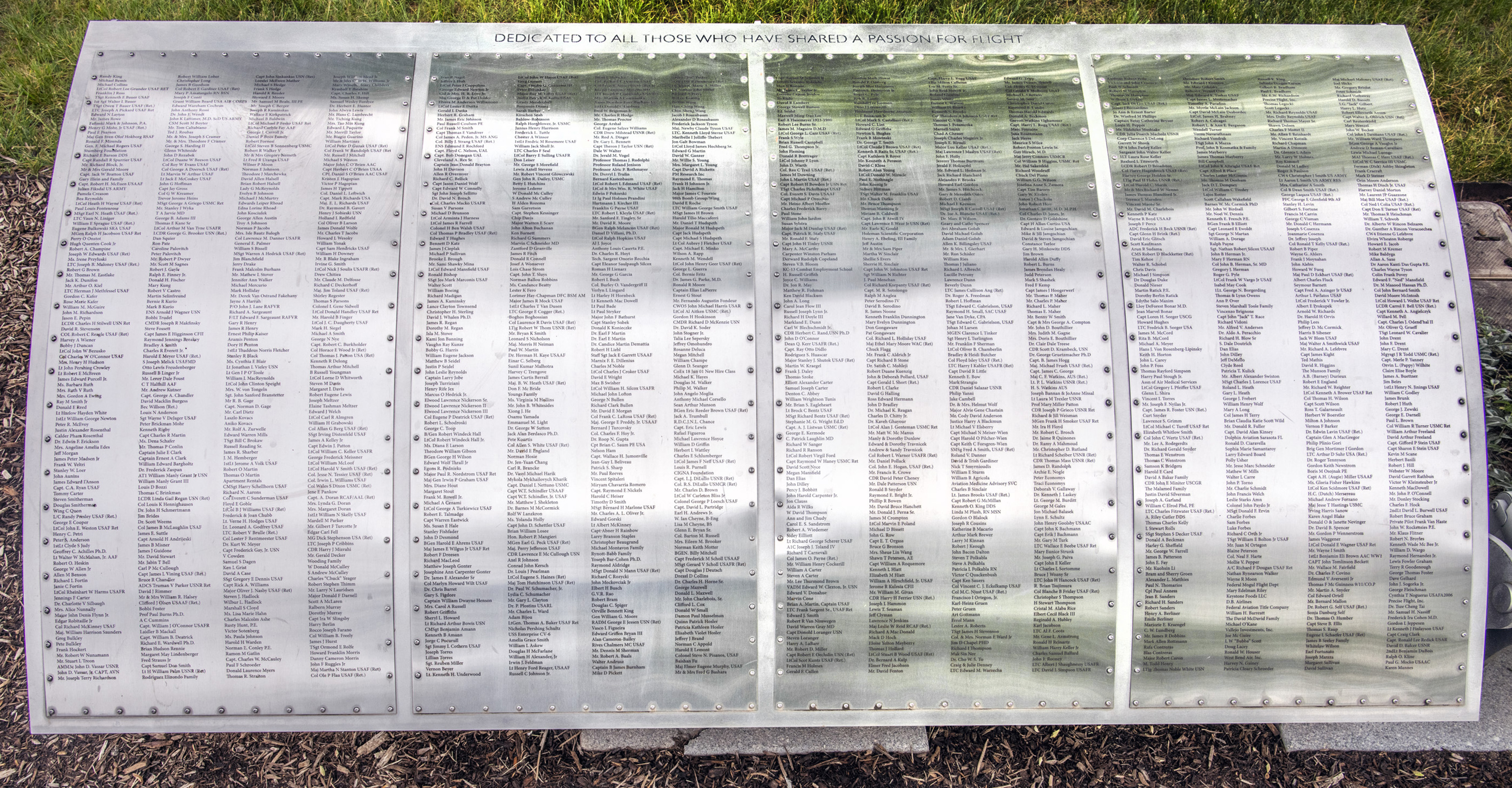Foil: 3 Panel: 2 Column: 4 Line: 78
Wall of Honor Level: Air and Space Friend
Honored by:
Mrs. Joanne Purnell
Louis R. Purnell, Sr. 81, was a World War II fighter pilot who flew 88 combat missions as an original member of the famed Tuskegee Airmen. He died of cancer on August 10, 2001 at his home in Washington.
In civilian life, Mr. Purnell was a researcher and surveyor with the Smithsonian Institution, where he retired in 1985 as a curator at the National Air and Space Museum, specializing in the acquisition of spacecraft and other artifacts of NASA missions.
But his years with the Tuskegee Airmen, the first black aircraft pilots unit in U.S. military history, were the defining period of Mr. Purnell’s life. He was one of about 500 Tuskegee pilots who flew combat missions during the war, and he served two tours of duty with the 99th Fighter Squadron and the 332nd Fighter Group, flying from bases in North Africa, Sicily and Italy. He received a Distinguished Flying Cross and the Air Medal with eight Oak Leaf Clusters.
“These brave pilots fought to defend their country, a country that had initially stated that, due to their racial origin, they possessed neither the brains nor the intelligence to handle such a complicated thing as an aircraft,” Mr. Purnell wrote this year in a forward to “Black Knights: The Story of the Tuskegee Airmen,” which was published by Pelican books. “I am proud to have been one of them.”
Mr. Purnell was born in Snow Hill, MD, and grew up in Wilmington, Delaware, and Cape May, NJ. As a child, he often rode his bicycle to a nearby airfield, where he watched Coast Guard pilots practice flying. He had wanted to fly airplanes since that time.
After high school, he attended Lincoln University in Pennsylvania, but he left to enroll in a new pilot training program for black men at Tuskegee Army Air Field in Alabama. The Tuskegee program had been undertaken at the urging of Eleanor Roosevelt and others, but support was unenthusiastic at the highest levels of the military command.
The first class of Tuskegee fighter pilots graduated three months after the 1941 Japanese attack on Pearl Harbor brought the United States into World War II, but the Army kept the unit in Alabama as subsequent classes of black cadet pilots took the same training.
“Undoubtedly, we were the most highly trained squadron in the United States, “Mr. Purnell told the Newark Star-Ledger in 1990. “The Air Corps brass couldn’t decide what to do with us, so we flew and flew for nearly a whole year simply to maintain our proficiency. It looked as if the black squadron was in danger of becoming a white elephant.”
Finally, in April 1943, the unit shipped out to North Africa. In the next two years of war, its men would complete 1,578 combat missions, destroying enemy rail traffic, hundreds of vehicles and surveillance stations in air-to-ground strafing missions. Sixty-six pilots were killed in aerial combat, and 32 were either shot down or forced down and taken prisoners of war.
To the Germans, the Tuskegee Airmen were “Schwartze Vogelmenshen”,” which means “Black Birdmen.” American bomber crews called them “Black Redtail Angels,” for the identifying red paint on the tail assemblies of their airplanes and their reputation for effectiveness in protecting the bombers from enemy fighters.
After leaving military service, Mr. Purnell came to Washington, graduated from Howard University with a degree in psychology and did additional graduate study at George Washington University. He was a speech therapist for a period, then worked with the Army quartermaster general’s office and the U.S. Book Exchange.
At the Smithsonian Institution, he worked in the National Museum of Natural History’s division of paleo-biology. In this capacity, he traveled about the world studying fossils and doing oceanographic surveys. In 1967, he joined the staff of the Air and Space Museum, where he remained until retiring. His specialties there included spacesuits and space mission food.
In retirement, Mr. Purnell traveled extensively, addressing student, business and professional organizations about aviation and his wartime experiences as a Tuskegee Airman.
He also was a licensed locksmith and a collector of locks, and a frame maker for the paintings of his wife of more than 30 years, Jo Ann Purnell.
His marriage to Mildred Reagin Rowland ended in divorce.
In addition to his wife, survivors include two children from his first marriage, a stepdaughter and seven grandchildren.
Wall of Honor profiles are provided by the honoree or the donor who added their name to the Wall of Honor. The Museum cannot validate all facts contained in the profiles.
Foil: 3
